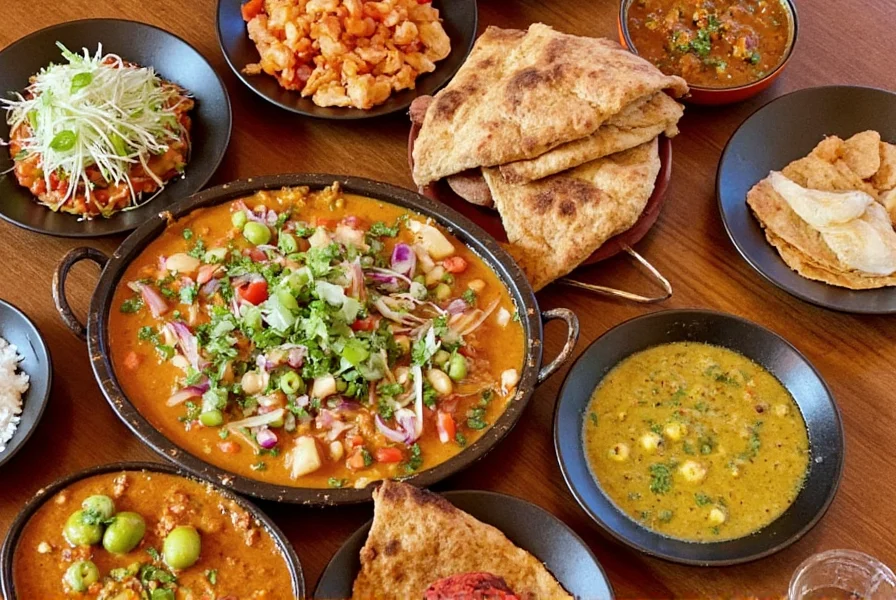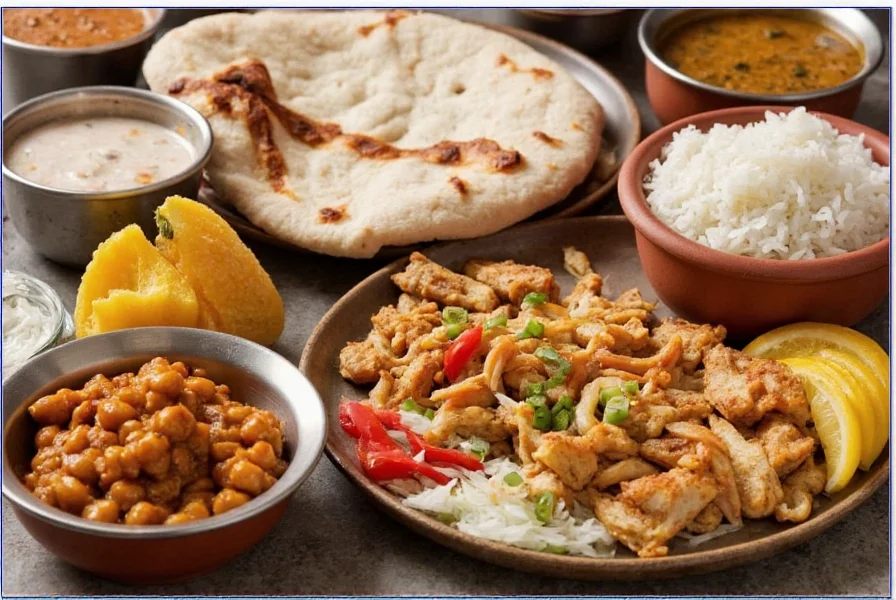When searching for an exceptional Indian dining experience, understanding the regional diversity of Indian cuisine is essential. India's culinary landscape spans eight distinct regions, each with unique ingredients, cooking methods, and flavor profiles. North Indian restaurants typically feature tandoori dishes, creamy curries, and various breads like naan and roti, while South Indian establishments specialize in rice-based dishes, lentil preparations, and distinctive vegetarian offerings.
Recognizing Authentic Indian Restaurant Characteristics
Several key indicators distinguish authentic Indian restaurants from generic 'Indian-style' establishments. First, examine the menu for regional specificity—restaurants specializing in particular regional cuisines (Punjabi, Bengali, Kerala, etc.) generally provide more authentic experiences than those offering a generic 'Indian' selection. Menus should feature traditional dishes with proper regional names rather than Westernized interpretations.
Authentic Indian restaurants typically prepare spice blends fresh daily rather than using pre-mixed commercial curry powders. The best establishments will have visible whole spices in their kitchens and knowledgeable staff who can explain the significance of various spices in different dishes. Traditional cooking methods like tandoor ovens (clay ovens reaching 900°F) significantly impact flavor and texture compared to standard kitchen equipment.
Regional Cuisine Differences Explained
Understanding India's regional culinary variations helps identify quality Indian restaurants. The northern regions, influenced by Mughal cuisine, feature rich, creamy dishes like butter chicken and korma, along with various breads cooked in tandoor ovens. Coastal regions incorporate more seafood and coconut-based preparations, while southern India specializes in rice-based meals, dosas (fermented crepes), and distinctive vegetarian thalis (platters with multiple small dishes).
| Region | Signature Dishes | Key Ingredients | Distinctive Features |
|---|---|---|---|
| North India | Butter Chicken, Tandoori, Biryani | Dairy, wheat, meat | Creamy sauces, tandoor cooking |
| South India | Dosa, Sambar, Idli | Rice, lentils, coconut | Fermented dishes, vegetarian focus |
| West India | Vada Pav, Dhokla, Seafood | Coconut, seafood, millet | Coastal influences, street food |
| East India | Rasgulla, Fish Curry, Luchi | Rice, mustard oil, sweets | Sweet specialties, fish dishes |
Navigating Indian Menus Effectively
For first-time diners at Indian restaurants, understanding menu terminology significantly enhances the experience. 'Curry' in Indian cuisine refers to any dish with a sauce or gravy, not a specific preparation. Dishes labeled 'masala' contain a spice blend, while 'tandoori' indicates cooking in a clay oven. 'Dhania' means coriander, 'jeera' is cumin, and 'garam' refers to a warming spice blend.
When ordering, consider starting with traditional breads like naan or roti, which serve both as utensils and accompaniments. Many quality Indian restaurants offer thali platters that provide a balanced sampling of regional specialties. Don't hesitate to ask staff about appropriate spice levels—authentic establishments will accommodate preferences while explaining traditional preparations.
Vegetarian and Dietary Considerations
Indian cuisine offers exceptional options for vegetarians and those with dietary restrictions. Approximately 40% of India's population follows vegetarian diets, resulting in sophisticated vegetarian cooking traditions. Look for restaurants clearly marking vegetarian (green dot) and non-vegetarian (red dot) items, a common practice in India.
Traditional Indian cooking naturally accommodates many dietary needs. Most Indian breads are vegan (without dairy), and numerous dishes are naturally gluten-free when prepared with rice flour or chickpea flour. Many establishments offer Jain cuisine options, which exclude root vegetables and follow strict vegetarian principles. When dining with specific dietary requirements, communicate them clearly to staff who can guide appropriate selections.
Cultural Dining Etiquette and Experience
Understanding basic Indian dining customs enhances the restaurant experience. In traditional settings, eating with the right hand (never the left) is customary, as the left hand is considered unclean. Many authentic restaurants serve meals on large metal thalis or banana leaves, reflecting regional traditions.
Complimenting the chef is appreciated in Indian culture, as food preparation is considered an art form. Don't be surprised if staff offer guidance on proper eating techniques or suggest traditional pairings. The best Indian restaurants create immersive experiences that extend beyond food to include appropriate music, decor, and service styles reflecting regional traditions.
Common Misconceptions About Indian Food
Several misconceptions about Indian cuisine persist in Western markets. Not all Indian food is extremely spicy—many classic dishes have subtle, complex flavors with moderate heat. Regional variations mean Indian cuisine encompasses everything from mild Kashmiri dishes to fiery Chettinad preparations.
Another misconception is that 'curry' represents a single dish or flavor profile. In reality, India has hundreds of distinct curry preparations varying by region, ingredients, and cooking methods. Quality Indian restaurants showcase this diversity rather than offering a standardized 'curry' experience.

Frequently Asked Questions
What distinguishes authentic Indian restaurants from generic ones?
Authentic Indian restaurants typically specialize in specific regional cuisines rather than offering a generic 'Indian' menu. They prepare spice blends fresh daily, use traditional cooking methods like tandoor ovens, and have knowledgeable staff who can explain dishes and ingredients. Menus feature proper regional dish names rather than Westernized interpretations, and the best establishments showcase India's diverse culinary heritage from specific regions.
How can I identify quality vegetarian options at Indian restaurants?
Quality Indian restaurants clearly mark vegetarian items (often with a green dot symbol) and offer sophisticated vegetarian dishes beyond basic adaptations. Look for traditional preparations like paneer-based dishes, dals (lentil preparations), and regional specialties such as Gujarati thalis or South Indian dosas. Authentic establishments will have extensive vegetarian menus reflecting India's strong vegetarian culinary traditions, with many offering Jain cuisine options that exclude root vegetables.
What should I know about spice levels when ordering at Indian restaurants?
Spice levels in authentic Indian restaurants typically range from mild to hot, with many establishments accommodating preferences. Contrary to popular belief, not all Indian food is extremely spicy—many classic dishes have complex, balanced flavors with moderate heat. When ordering, specify your preferred spice level (mild, medium, hot) and remember that 'spicy' in Indian cuisine refers to both heat and complex flavor profiles from various spices. Quality restaurants will adjust heat levels while maintaining authentic flavor profiles.
How do North Indian and South Indian cuisines differ in restaurant settings?
North Indian restaurants typically feature tandoori dishes, creamy curries, and various breads like naan and roti, reflecting Mughal influences. South Indian establishments specialize in rice-based dishes, fermented preparations like dosas and idlis, and distinctive vegetarian thalis. North Indian menus often include more meat dishes and dairy-based sauces, while South Indian cuisine emphasizes vegetarian options, coconut, and lentils. The best Indian restaurants specializing in either region will showcase these distinct culinary traditions authentically.











 浙公网安备
33010002000092号
浙公网安备
33010002000092号 浙B2-20120091-4
浙B2-20120091-4